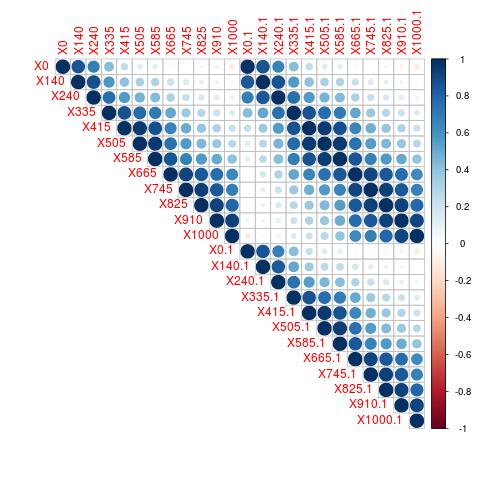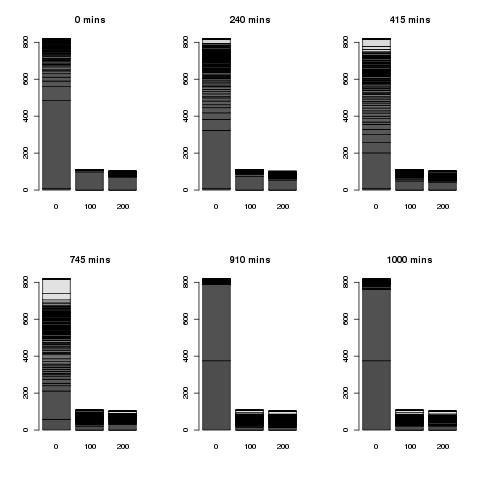Whole genome sequencing of time course evolving populations is now possible. In their experiment, they monitor the allele frequency of all alleles that reach a frequency greater than 0.1. The fact that the allele frequencies are correlated between time points in both methods used to measure allele frequencies suggests that their method is rather robust. (see correlation plot of allele frequencies at different time points[in minutes]).
We next explore the change in allele frequency as function of time and distance from the nearest gene. The below plot shows that the allele frequency increases near to genes only in the later stages of the experiment. The first bar represents all the sites nearest to the genes and the bars next to it are those further away from it. Over the time course, the allele frequency of the mutants increase nearer to the gene.


No comments:
Post a Comment